From Seed to Stomach: Students Growing Their Own Food
Goosefoot helps educate children and cultivate community through funding of the South Whidbey School Farm program.

Pick a pumpkin or two or three dozen, mix in a few culinary lessons and be ready for kids to produce delicious-tasting results. That’s the basic recipe for success of the South Whidbey School Farm program launched in 2014 with major support from the Goosefoot Community Fund, and its community grocery store, the Goose Grocer.

Learning how food is grown and how to cook it are two lessons of many imparted through hands-on experiences.
Kindergartners through 12th graders learn the basics of sustainable agriculture, nutrition and eating healthy while growing and preparing their own vegetables, beans and squash.
“It’s really from seed to stomach,” said Cary Peterson, farm manager who proposed the idea to the district and to Goosefoot. “These kids know what a real carrot tastes like.”
Over five years, Goosefoot donated $270,423 to the unique educational farm initiative through matching grants, direct grants and community support. Residents shopping at The Goose, the community grocery store owned by Goosefoot, help by buying groceries because revenue from the store directly funds programs and projects backed by the organization.
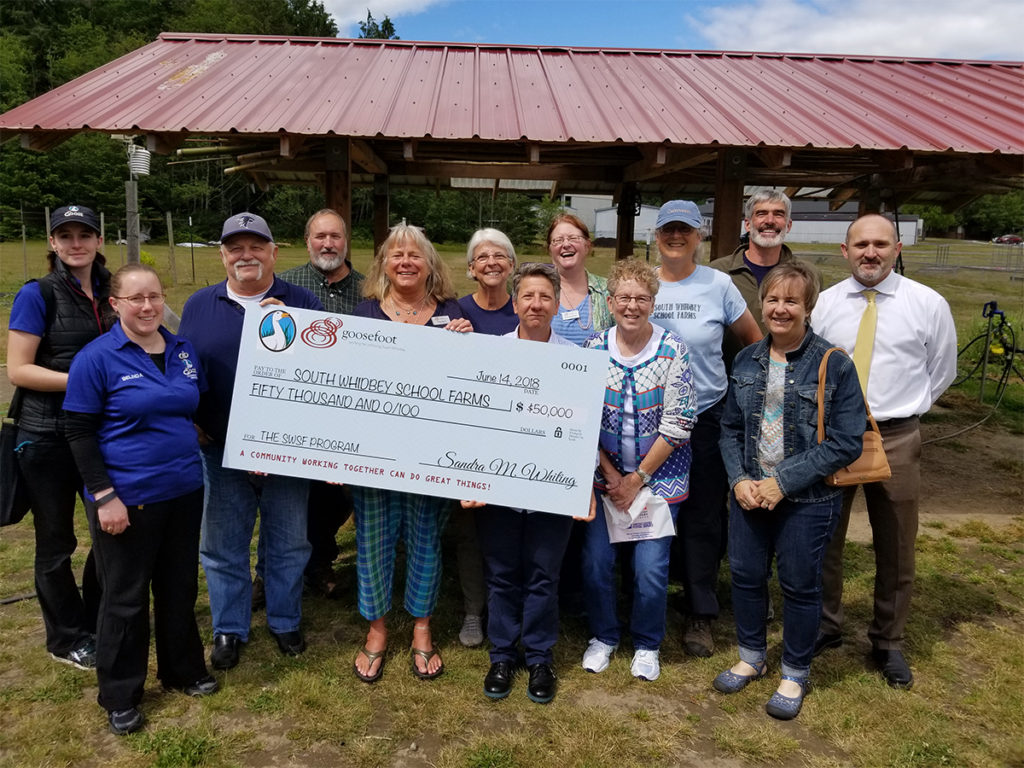
Goosefoot executive director Sandra Whiting calls it an investment in the present and future. “Instilling an appreciation of fresh vegetables at an early age will have a ripple effect for years to come,” Whiting said.
‘Garden nibbles,’ when kids rush rows of veggies to search for the perfect snack, provides a peek into the program. “My favorite veggies here are carrots and corn,” one fourth-grade girl remarked as she carefully cleaned off the dirt from her prize carrot under the water pump. “I’m not sure about eating pumpkins, though.”
In 2020, the school district took over funding two farm program staff positions. The culinary program and AmeriCorps positions are still funded by the community.
“Today, hundreds of students love healthy, fresh vegetables. They love to work and learn at the School Farm because of the funding vision of Goosefoot, their innovative community economic model, and their commitment to the community.”
Cary Peterson, Farm Manager
South Whidbey School District Superintendent Jo Moccia says the farm program “has grown beyond our expectations. We now have class options for students K-12. Each student K-6 has “garden” as a class and also has options for culinary classes weekly.”
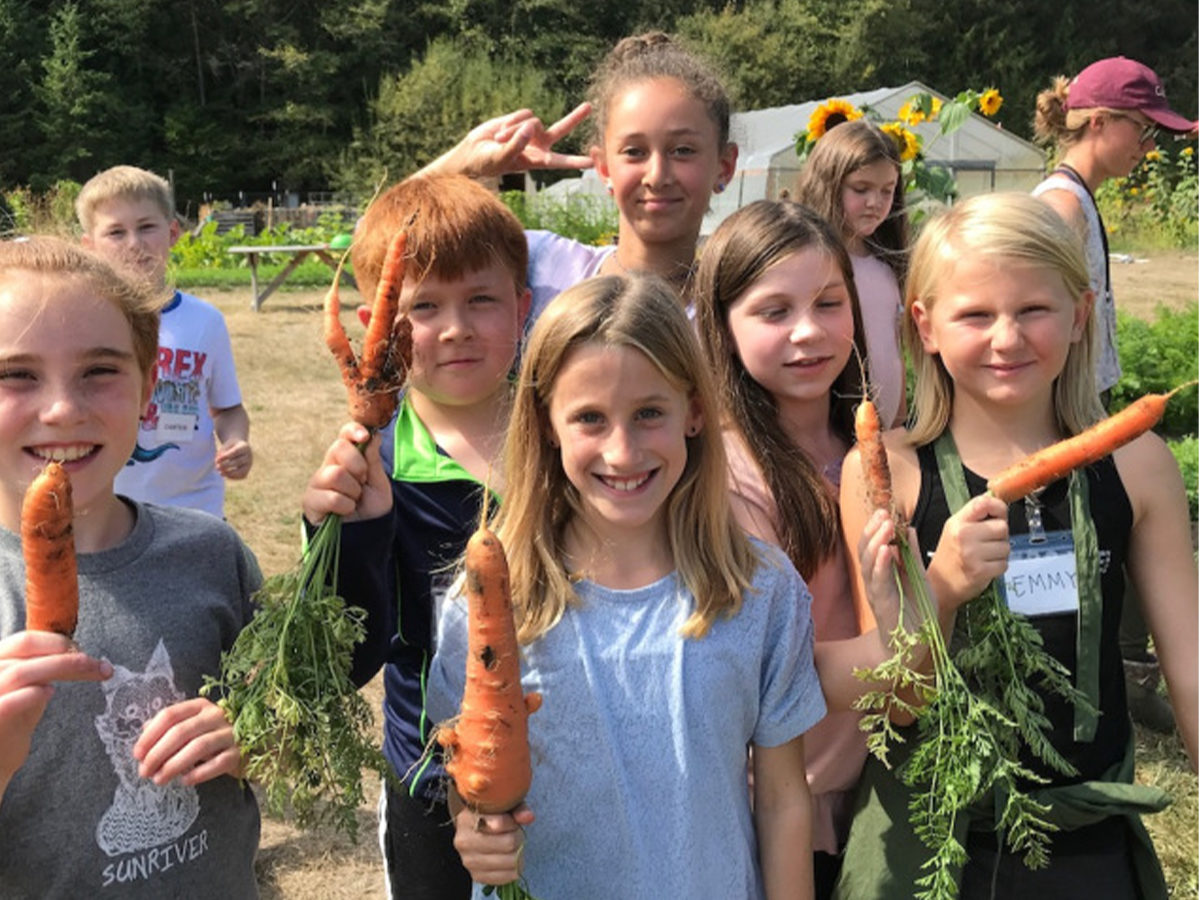
Additionally, in grades 7-12, students can take agriculture classes that apply to their credits needed to graduate. “Our gardens grow food for our cafeteria as well,” Moccia added. “This would not have been possible without Goosefoot funding our program for the first several years.” She noted that sustaining the program is now part of the priorities for the district.
Before COVID-19 closed the school district for the 2019-2020 school year, students raised money through their own culinary creations. Frijole Friday was a favorite community event gathering featuring handmade masa harina tortillas, scarlet runner beans, and other fresh produce for $10.
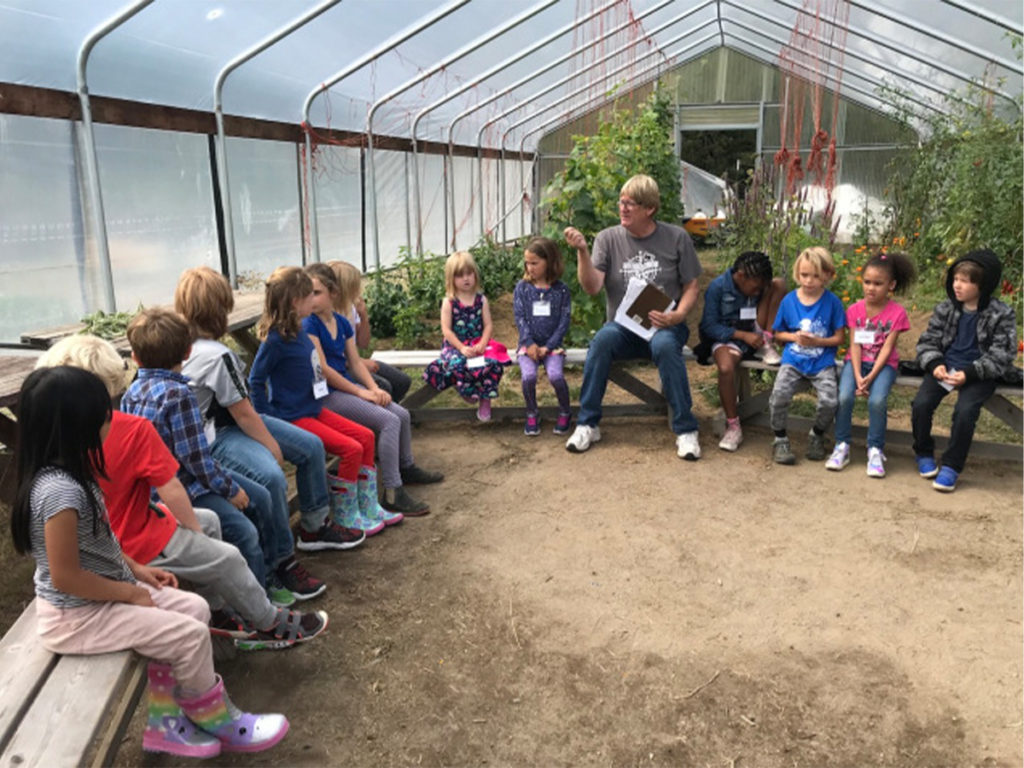
“Today, hundreds of students love healthy, fresh vegetables,” Peterson said. “They love to work and learn at the School Farm because of the funding vision of Goosefoot, their innovative community economic model, and their commitment to the community.”
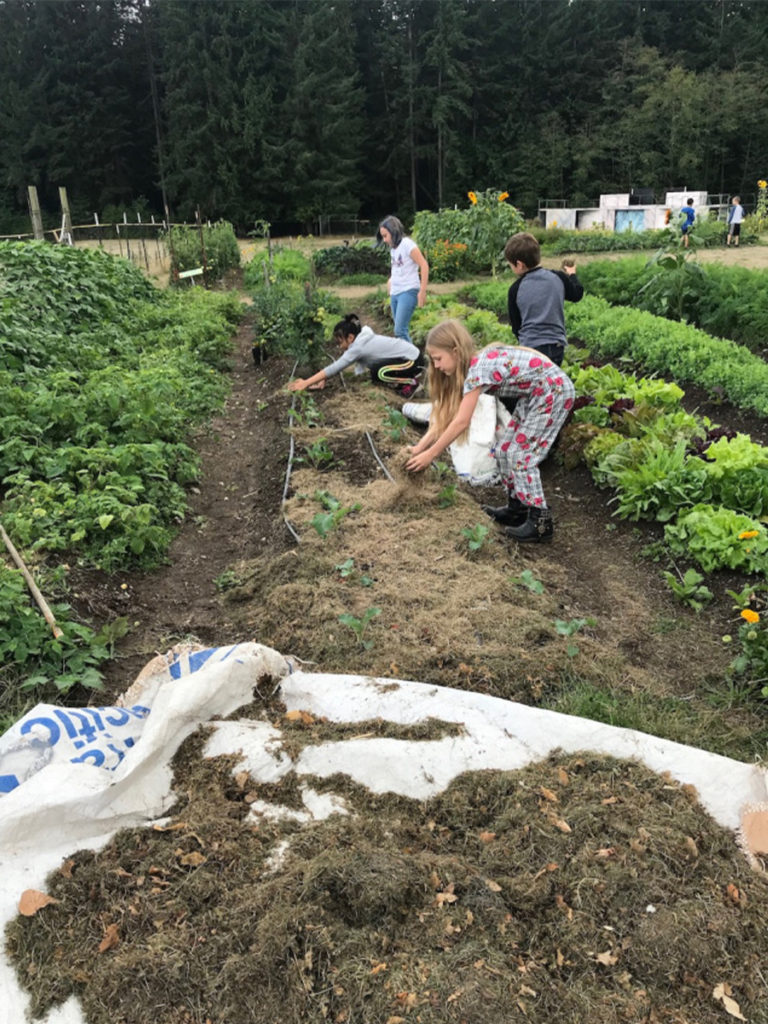
School-grown organic veggies — lettuce, kale, spinach, cucumbers, carrots, broccoli, cabbage, bok choi, peas, beans, cherry and slicing tomatoes, peppers, scallions, potatoes, zucchini and winter squash — also end up on students’ plates through an arrangement with Chartwells, the corporate food service provider. Every year, the South Whidbey School Farm program sells about 1,000 pounds of fresh produce to Chartwells for the school lunches.
South Whidbey’s food banks also receive the kids’ crops. Collaborating with the program are nonprofit organizations Good Cheer Food Bank and Whidbey Island Nourishes.
But most the veggies are eaten on the spot during farm classes, or during culinary classes.
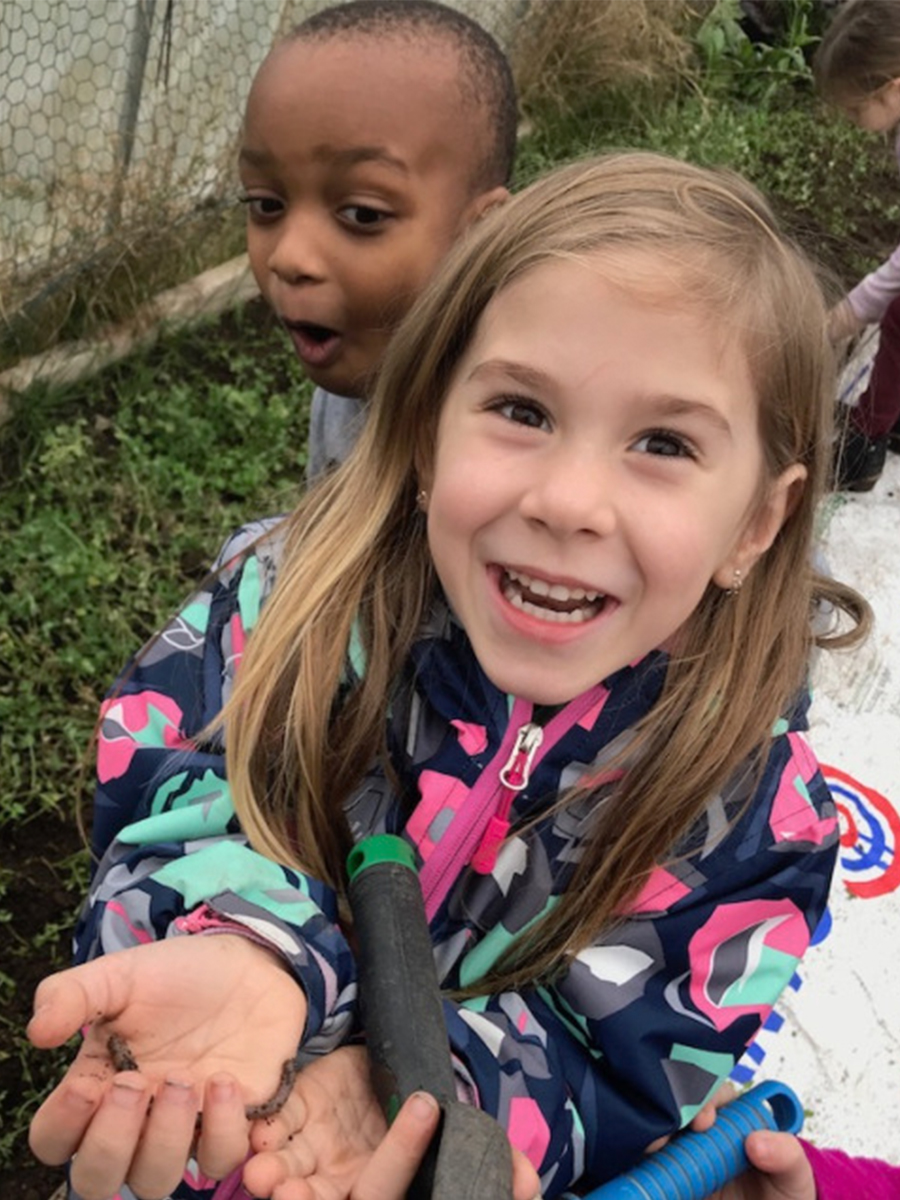
Math, science, drawing or other skills are used during a typical day’s farm lesson. One fall day, fourth graders eagerly searched for the perfect orb. They then weighed sugar pie pumpkins, red kuri squash and butternut squash, all bound to be used in pies cooked by students.
Numbers were then crunched, so to speak, into various mathematical challenges. They calculated the total poundage of sugar pie pumpkins and figured out how many pies could be produced.
The answer — 80 pies — made by a team of fifth and sixth graders. In a commercial kitchen, they also mashed some 75 pounds of potatoes. And they learned that whipped cream doesn’t naturally occur in a can when they whipped their own thick, rich cream to top the pies.

“I made mashed potatoes at home after we made them here,” one sixth-grade girl said while measuring nutmeg, ginger and cinnamon. “Maybe I’ll try making a pie. And whipped cream, for sure.”
A few weeks later, the Farm Team served up their lessons on plates to some 600 families, staff and students attending the district’s annual Harvest Feast that occurs before Thanksgiving break. A raw root salad with kale and apples was part of the team’s side dishes.
Even keep-away-from-kale folk admitted to liking it. “I don’t normally eat kale, but I’m eating it all,” remarked Kenesha Mills, a South Whidbey resident who attended the fall feast with her young daughter. “It’s just delicious.”
written by Patricia Guthrie
